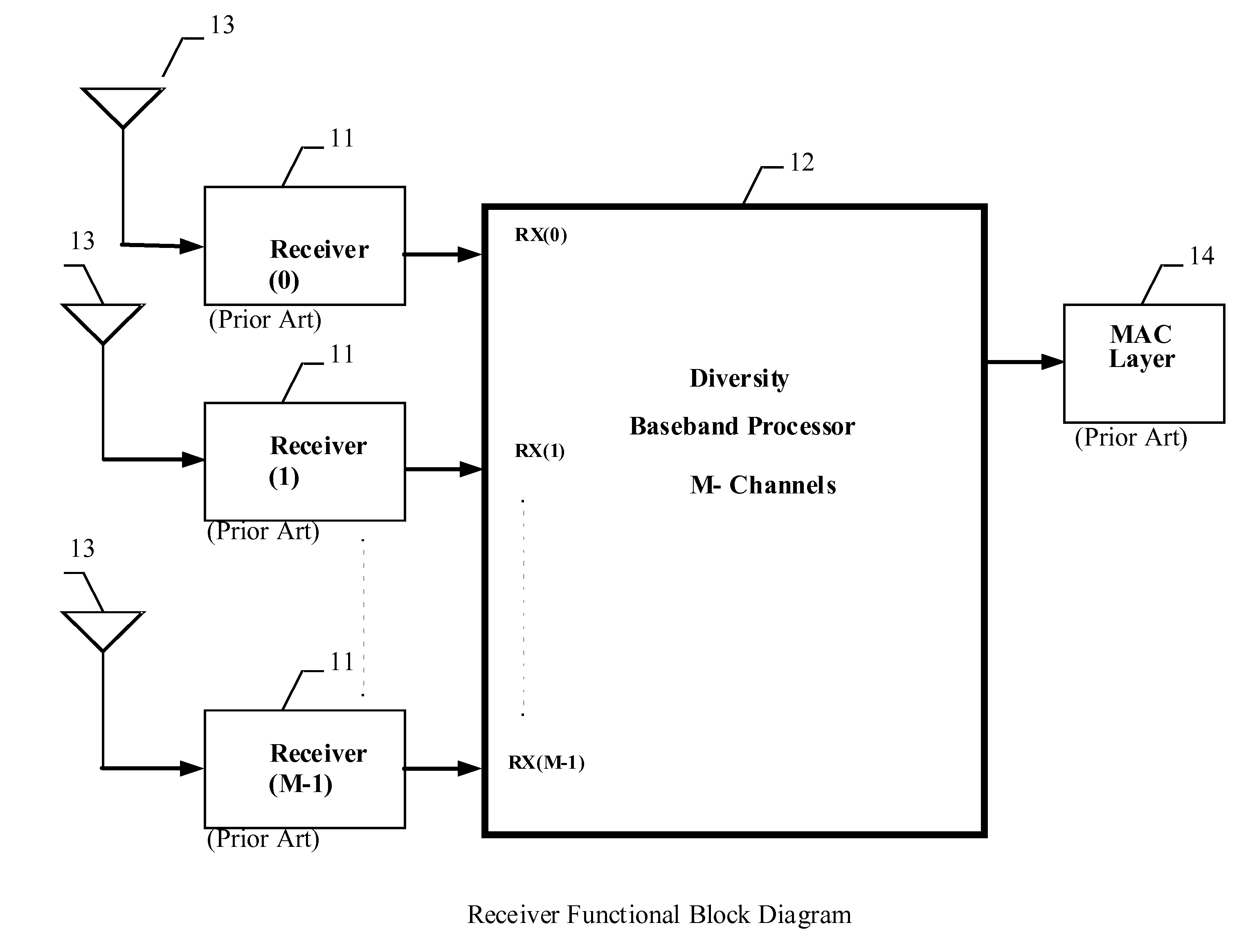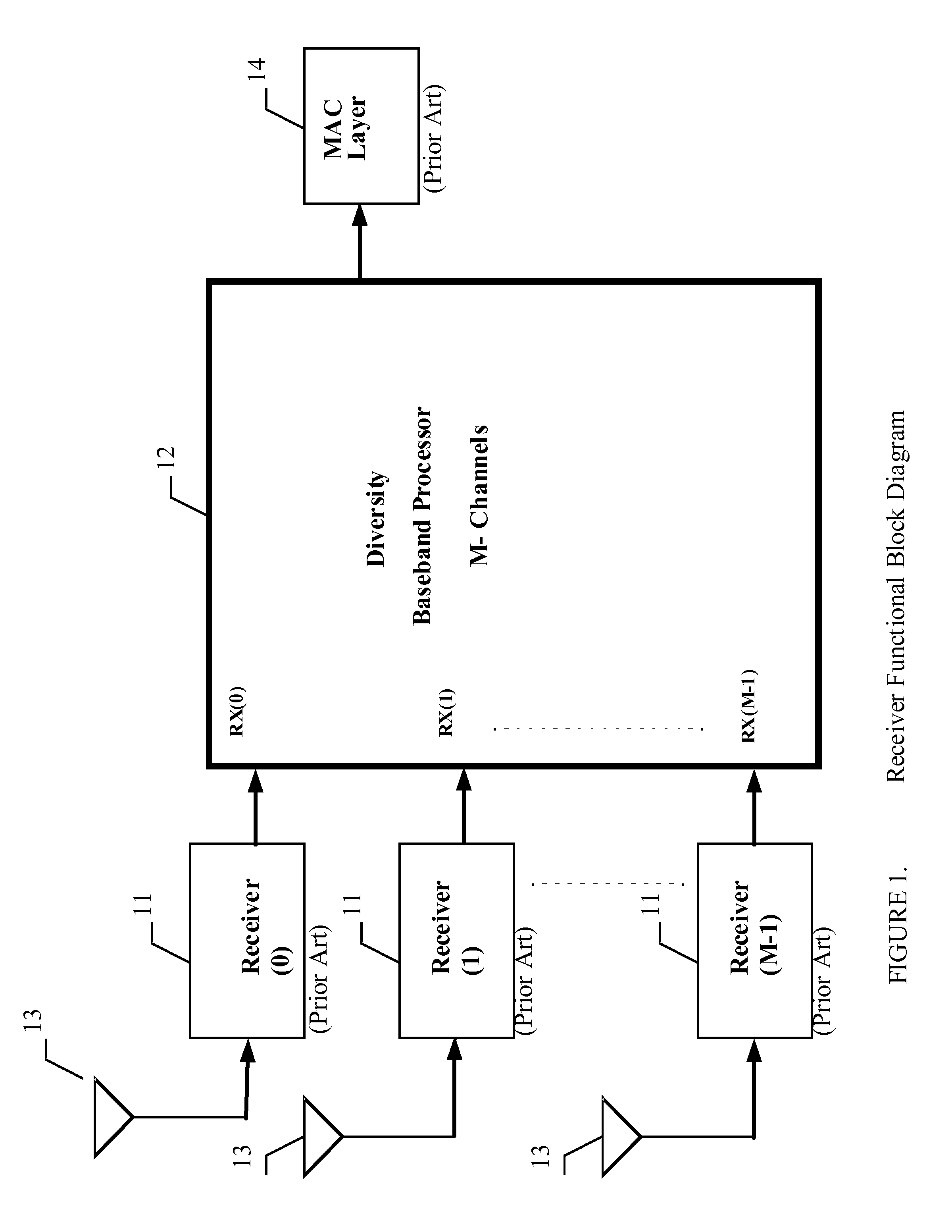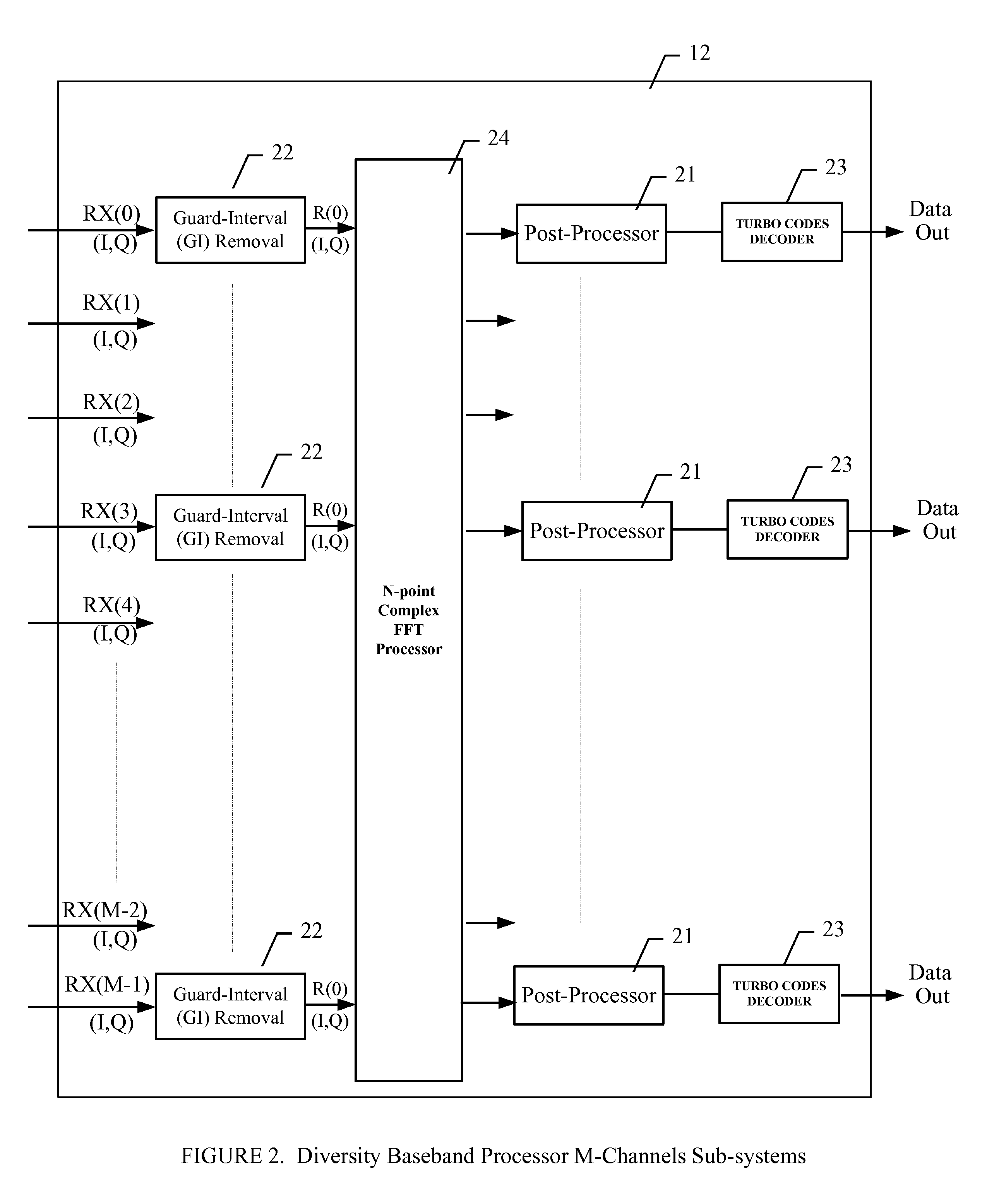[0011]The present invention is directed to a MIMO Diversity M-channels
Baseband Processor sub-system using diversity
processing to improve error-rate of
data transmission and to implement a more efficient, practical and suitable architecture and method to increase the
signal to
noise ratio (SNR), and to achieve the requirements for
wireless systems, including the features of higher speed data throughput, lower power consumptions, lower costs, and suitable for implementation in ASIC or DSP codes. The diversity is achieved by paring two orthogonal channels for processing multipath data to improve
receiver performance output. The present invention encompasses several improved and simplified Turbo Codes Decoder methods and devices to deliver higher speed and lower
power consumption, especially for applications. Diversity processing can increase the
signal to
noise ratio (SNR) more than 6 dB, which enables
wireless systems to deliver data rates up to 200 Mbit / s. As shown in FIG. 2, an exemplary embodiment of the Diversity M-channels
Baseband Processor sub-system 12 utilizes an N-point Complex
FFT Processor 24, and a Turbo Codes Decoder 23 for diversity processing. Each Turbo Codes Decoder 23 has two serially concatenated Soft-input Soft-output logarithm maximum a posteriori (SISO Log-MAP) Decoders 42, 44. The two decoders function in a pipelined scheme with
delay latency N. While the first decoder is decoding data stored in the second-decoder-Memory 45, the second decoder performs decoding for data stored in the first-decoder-Memory 43, which produces a decoded output every
clock cycle. As shown in FIG. 6, the Turbo Codes Decoder 23 utilizes a Sliding Window of Block N 61 on the Memory 41 to decode data per block N, which improves processing efficiency. The invention presents a method to divide the
wireless broadband into multiple sub-channels and uses an
Orthogonal Frequency Division Multiplexing method implemented by N-point complex
FFT Processor 24 to effectively divide the
broadband high-speed channel into multiple slow-speed N sub-channels where multiple adjacent channels transmit their carriers' frequencies which are orthogonal to each other. The high-speed bit-
stream is also sub-divided into multiple slow-speed sub bit-streams. For example, if the total
broadband channel capacity is R-Mbps, then the slower sub-
channel capacity S-Mbps is equal to (R-Mbps) / N. The slower sub-
channel capacity benefits the Turbo Codes
baseband processor since it performs much better at a slower
bit rate with a greater number of iterations. Each bit-
stream is encoded one bit per cycle with the Turbo Codes
encoder and then mapped into an 8-PSK
constellation point where its I and Q components are mapped into the real and imaginary part of the complex FFT point. Since M is less than or equal to N, channel hopping can be accomplished by assigning a bit-
stream to a new channel once its
current channel becomes noisy. Accordingly, several objects and advantages of the Diversity M-channels
Baseband Processor sub-system 12 are:
[0014]To utilize SISO Log-MAP decoders for best result and faster decoding and simplified implementation in ASIC circuits and DSP codes with the use of binary adders for computation.
[0016]To utilize a Sliding Window of Block N on the input buffer memory to decode data per block N for improved pipeline processing efficiency
[0017]To provide higher performance in term of symbol error probability and low BER (10−9) for 3G applications such as 3G WCDMA, and 3G CDMA2000 operating at very high bit-rate up to 200 Mbps, in a low power, noisy environment.
 Login to View More
Login to View More  Login to View More
Login to View More 


